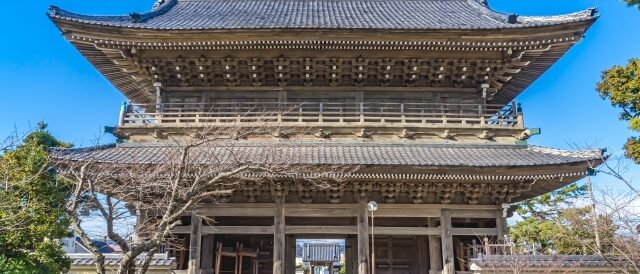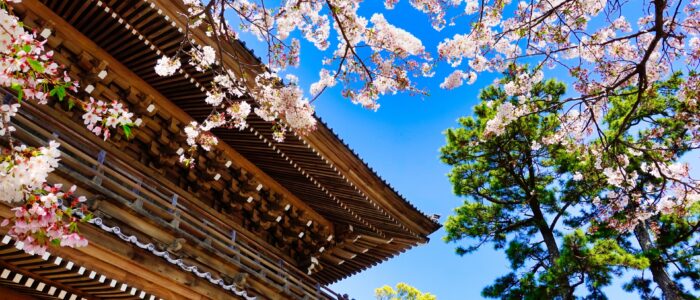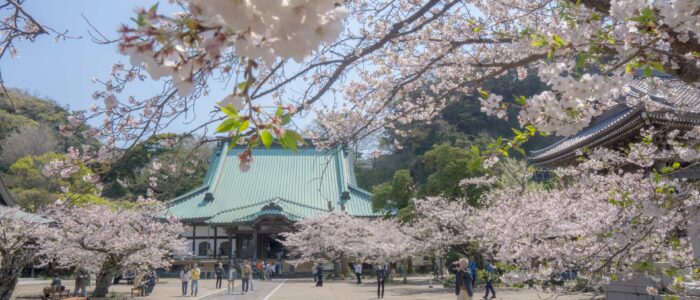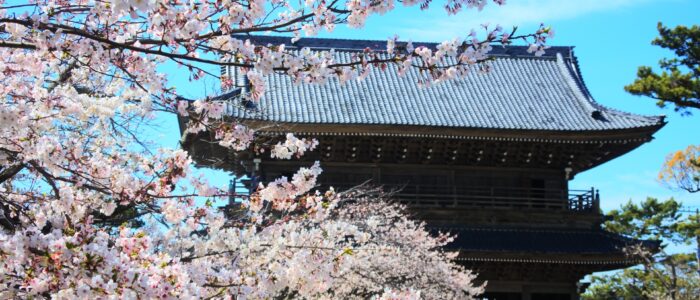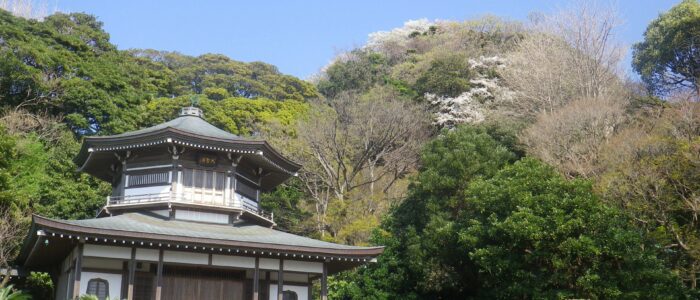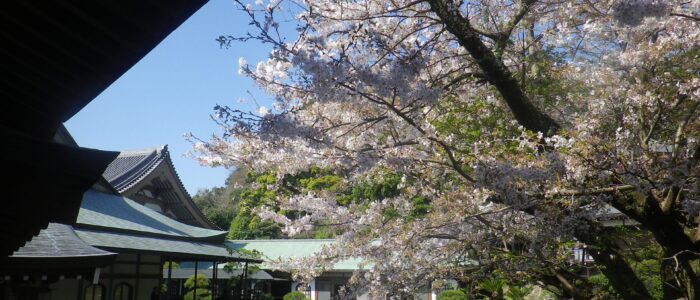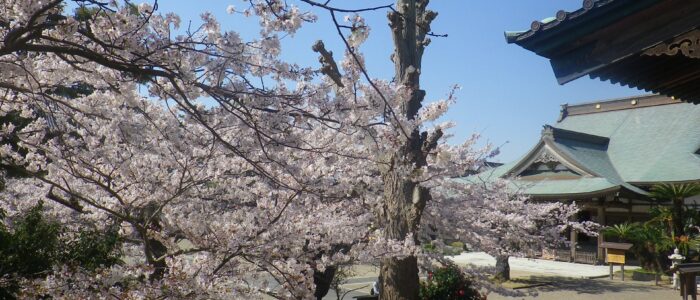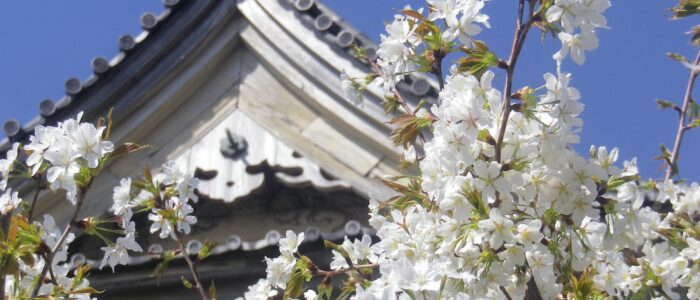Komyo-ji Temple (光明寺)
Discover Komyo-ji Temple (光明寺)
Komyo-ji Temple, located in the Zaimokuza area of Kamakura, is the head temple of Jodo Buddhism in the Kanto region. It was originally founded in the mid-13th century by the revered monk Nen’a Ryōchū (然阿良忠), under the patronage of the 4th regent of the Kamakura shogunate, Hojo Tokiyuki (北条経時). The temple was initially called Renge-ji and situated in Sasuke Valley, before relocating to its current site and being renamed Komyo-ji.
In the late 15th century, the temple became an official imperial prayer temple (chokugan-ji) under Emperor Go-Tsuchimikado (後土御門天皇). This status led to the establishment of the Ojuya (お十夜) ceremony—a symbolic ritual praying for rebirth in the Pure Land. This deeply spiritual event remains an essential tradition today.
Temple Highlights: Architecture, Scenery, and Seasonal Beauty
The temple grounds feature a range of historical structures, including the Great Main Hall (Hondo)—a designated Important Cultural Property of Japan—and one of the largest temple gates in eastern Japan. The Hondo, currently under renovation for the 850th anniversary of the Jodo sect, houses the principal statue of Amida Nyorai (阿弥陀如来), which can still be viewed in a temporary hall.
The grand gate, reconstructed in the mid-19th century, offers stunning views from its upper deck: Zaimokuza Beach (材木座海岸), Yuigahama (由比ヶ浜), Enoshima (江ノ島), and even Mt. Fuji (富士山) on a clear day.
A viewing platform on the rear hillside offers one of the “50 Scenic Views of Kanagawa (かながわの景勝50選),” enhanced each season by cherry blossoms in spring and colorful foliage in autumn.
Cultural Significance and Spiritual Meaning
Komyo-ji served as the top-ranked site among the Kanto Juhachidanrin (関東十八檀林), a group of Jodo Buddhist training centers. In the Edo period, it was under the protection of Tokugawa Ieyasu (徳川家康), further solidifying its status as a temple of high prestige. Worshippers come to seek guidance to the Pure Land through the compassionate presence of Amida Nyorai.
Goshuin, Omikuji, and Ritual Traditions
Goshuin (御朱印) are available daily from 9:00 a.m. to 4:00 p.m. During the annual Ojuya ceremony, visitors can experience unique traditions such as chigo raisan (稚児礼讃舞) dance and sōban nenbutsu (双盤念仏) chanting, showcasing the temple’s deep spiritual heritage and its ties to the local community.
Visiting Hours and Access
The temple’s gate hours vary seasonally: from April 1 to October 14, it opens from 6:00 a.m. to 5:00 p.m.; from October 15 to March 31, it opens from 7:00 a.m. to 4:00 p.m. The temple office is open year-round from 9:00 a.m. to 4:00 p.m. A viewing fee may be required during special openings of the temple gate.
Best Times to Visit
Each season paints Komyo-ji in a different light: cherry blossoms in spring, lotus flowers in summer, and maple leaves in fall. Early mornings and late afternoons offer a serene atmosphere that’s especially rewarding for guests staying nearby. A quiet walk before breakfast or a peaceful visit after watching the sunset over the ocean is a truly local experience—ideal for flexible, kitchen-equipped stays like Tosh’s Place (トシズプレイス).
Nearby Spots to Explore on Foot
Within walking distance are Zaimokuza Beach (材木座海岸) and Yuigahama (由比ヶ浜), both perfect for a tranquil seaside stroll. Just nearby lies Wakae-jima (和賀江嶋), Japan’s oldest artificial harbor—a fascinating remnant of medieval maritime engineering.
Who Should Visit?
Komyo-ji is perfect for those interested in Japanese Buddhism, temple architecture, and quiet natural beauty. It’s also ideal for travelers who prefer to avoid crowds, explore at their own pace, and value meaningful spiritual moments. A stay that gives you the freedom to choose your timing makes all the difference.
Wrap-Up: A Sacred Space for a Thoughtful Kamakura Journey
Komyo-ji is a spiritual and historical treasure in Kamakura, where nature, faith, and architecture come together in harmony. Visiting in the early morning or around dusk offers a rare chance to experience its peaceful essence. With a flexible, self-guided travel style based at Tosh’s Place (トシズプレイス), you’ll have the freedom to savor the temple’s calm at your own rhythm.

